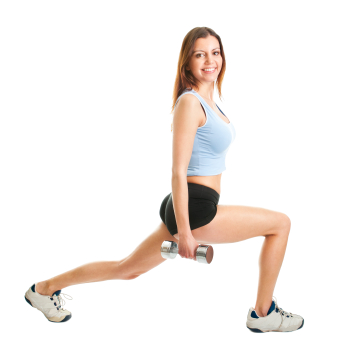Have you made your ski lodge reservations yet?…..Well now it is time to prepare your heart and body for a full day of skiing with decreased risk of pain and injury. We can increase our safety and performance this winter by starting now with a pre-conditioning program that includes four components: endurance, strength, flexibility, and balance.
Today I will talk about endurance and strength. Endurance comes from a good cardiovascular program. Aerobic fitness is the key to preventing the end of the day injuries (the last run). Your cardio program should include: 3 to 5 days each week of your favorite activity. The best for skiing include running, the stairmaster, step aerobics, elliptical trainer and rollerblading. Try to have a variety of workouts at varying intensities lasting from 20 to 45 minutes. Include one long, slow workout each week for 60 or more minutes to condition your legs and lungs for long days of skiing.

Strength and flexibility focusing on the legs and trunk are vital in injury prevention specific for skiing. Strengthening should be done 3 times a week, with a day in between each strengthening session for recovery. Here are listed some good ideas to strengthen the muscle groups used most while skiing.
- Quadriceps. Probably the most used muscle in skiing are the muscles of the quads. These muscles hold you in position as you ski and they also provide protection for your knees. Great exercises for the quads include squats and lunges.
- Hamstrings and Glutes. When skiing downhill, you typically hold your body in a flexed position — meaning you’re leaning forward from the hips. This requires great strength from your hamstrings and glutes as they help stabilize your body. Work your hams and glutes with deadlifts, one legged deadlifts, step ups and hamstring curls.
- Inner and Outer Thighs. Your inner thighs work like crazy to keep your skis together. Your outer thighs keep your body stable and help you steer. Work these muscles with side lunges, inner thigh leg lifts, inner thigh squeezes, side step squats.
- Calves. Because your knees are bent as you ski, your calves (specifically the deep muscle called the soleus) help you stay upright so you don’t fall over. You can work this muscle by doing standing calf raises or machine calf raises.
- Abs and Back. Because you’re in a flexed position, bent over, your back has to work constantly to hold your body in that position. Your abs help in that endeavor while also protecting your spine. Work these muscles with exercises like bicycles, woodchops, back extensions and dumbbell rows.
Next week, I will address flexibility and balance to round out our skiing fitness/ preparation.

